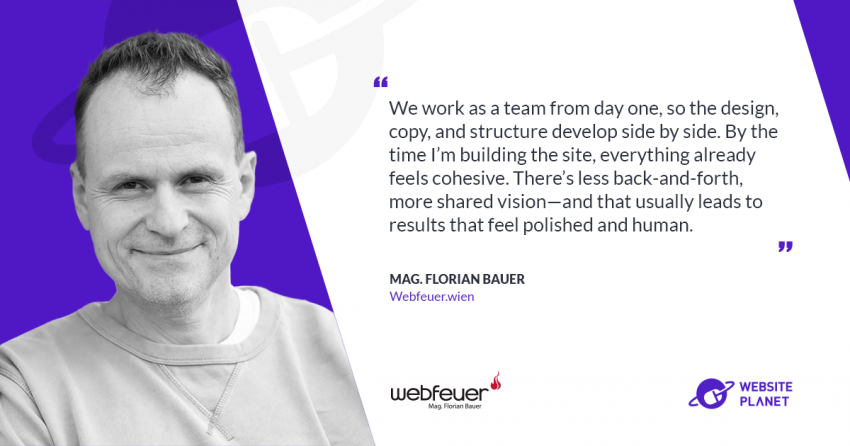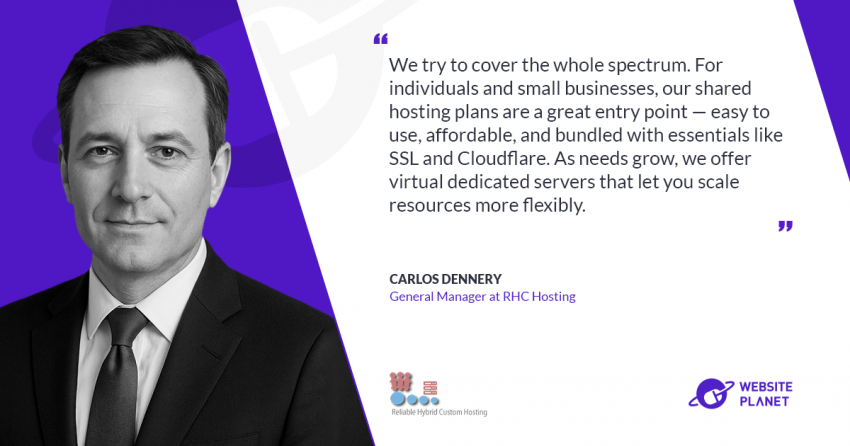In an exclusive interview with Website Planet, Francis Martens shares the inspiration behind the creation of Exalate.
The journey began while running a professional services company specializing in Atlassian tools like Jira, where the need for seamless cross-system collaboration became evident. Recognizing the challenge of integrating different systems and processes, especially in cases of cross-company collaborations, Martens and his team developed Exalate to address this gap.
The solution, which started as a custom development project, has since evolved into a powerful tool that facilitates efficient and secure data synchronization across diverse platforms.
What inspired the creation of Exalate?
The inspiration behind the creation of Exalate stemmed from customer needs, much like any other product development process. At the time, we were operating a professional services company that specialized in Atlassian tools like Jira, Confluence, Bamboo, and Bitbucket. Our role involved deploying these tools for various customers, and it became apparent that a significant challenge was the need for seamless collaboration between different systems, especially when two companies needed to work together.
One of our customers faced a situation where both they and their client used Jira but had different setups. They needed a solution that allowed them to raise tickets in their Jira system and have them seamlessly transferred to their client’s Jira system. This situation highlighted a broader issue of cross-company integration, where different environments, processes, and even languages made collaboration challenging.
Recognizing this widespread problem, we embarked on a custom development project in 2014, which confirmed the demand for a solution that could handle such integrations efficiently. At the time, no suitable solution existed in the Atlassian marketplace, which led us to develop a product to address this need. Initially named “Issue Hub,” the product was later renamed “Exalate” – a wordplay on “escalate” that was coined by a typing mistake but felt fitting for the product’s purpose.
Exalate’s concept as a networking product, similar to platforms like LinkedIn or Slack, also introduced the potential for a network effect, where its value increases as more users adopt it. This realization, along with the practical need and the opportunity to build a business, convinced us that we had a promising product on our hands. Thus, Exalate was born out of a practical need, careful consideration, and a bit of serendipity.
Can you explain how Exalate facilitates cross-team collaboration?
The primary function of Exalate is to support use cases where cross-team collaboration is essential. In many projects, different teams need to work together, whether it’s a development team collaborating with a validation team or multiple development teams focusing on different aspects of a product. This collaboration can be straightforward if all teams work within the same project management environment, as tasks and progress can be easily tracked.
However, challenges arise in larger projects where teams operate in different environments. In such cases, coordinating and exchanging information becomes difficult. Traditionally, this coordination is managed through meetings between project managers to discuss status, deliverables, and milestones. But the complexities often lie in the details—specific requirements and specifications can easily be misunderstood if not properly communicated and recorded.
Exalate bridges this gap by connecting different systems that teams use. This allows a request raised in one system to be resolved in another, with all details—such as comments, attachments, statuses, and assignees—automatically synchronized across systems. While effective project management practices and regular meetings are still necessary to discuss project progress, Exalate helps streamline communication and reduce misunderstandings about specific tasks or deliverables. This integration enhances the efficiency and effectiveness of cross-team collaboration, ensuring that everyone is on the same page and focused on the most critical aspects of the project.
What are the key features that set Exalate apart from other integration solutions?
Indeed, integration solutions have been necessary since the advent of multiple computers needing to communicate. Integrations can be complex and challenging to both set up and maintain. Often, when someone who set up an integration moves on or when a team changes its processes, the integration can break. This situation can create significant issues, especially when the person responsible for the original setup is no longer available to fix it.
When we decided to focus on cross-company integrations—where independent teams need to work together—we knew we needed a system that could support these more complex scenarios. That’s where the concept of a distributed integration solution came into play. This type of integration allows each party to decide how their part of the integration should work, independently. So, if one company changes its internal processes, it can do so without disrupting the integration, as long as the agreed-upon data exchange standards are maintained. This feature is crucial for cross-company collaborations because it avoids the need for other parties to adapt immediately to changes, which can be time-consuming and impractical.
A significant additional benefit of this distributed approach is enhanced security. In a traditional, centralized integration, one party typically has extensive access to the other’s systems, which can be a security risk. However, with a distributed integration, each party maintains control over its data, ensuring that only the agreed-upon information is shared. This is particularly important in cross-company settings where you may not have complete control or knowledge of the other party’s internal security protocols.
Another key feature that distinguishes Exalate from other solutions is its flexibility. In today’s fast-paced environment, businesses often need to integrate with new partners or systems that may have unique requirements. Exalate’s platform supports a wide range of customization options, allowing you to meet the specific needs of new partners without having to overhaul existing integrations or persuade other partners to switch technologies. This flexibility reduces the complexity and cost associated with managing multiple integration technologies.
In summary, the two standout features of Exalate are its distributed integration approach and its flexibility. These features ensure that companies can maintain secure, adaptable, and reliable integrations even in complex, multi-party environments.
How does Exalate handle data synchronization across different platforms?
Data synchronization with Exalate is conceptually straightforward but involves a series of technical steps to ensure smooth operation across different platforms. Here’s a basic outline of how it works:
1. Deployment of Exalate Nodes: Since Exalate operates as a distributed integration solution, it requires the installation of an Exalate node on each side of the integration. For instance, if you’re integrating JIRA with ServiceNow, you would deploy an Exalate node for JIRA and another for ServiceNow. Each node is tailored to work with its respective platform.
2. Change Detection and Message Creation: When a change occurs in an issue or incident on one platform, the Exalate node for that platform detects the change. For example, if an issue in JIRA is updated, the Exalate for the JIRA node will capture this change.
3. Data Transformation and Secure Transmission: The Exalate node transforms the detected changes into a message format that is understandable across different systems. This message is then securely transmitted to the corresponding Exalate node on the other platform.
4. Message Processing and Data Application: Upon receiving the message, the Exalate node for the second platform (e.g., ServiceNow) processes the data and applies the necessary changes to the relevant records. This process ensures that the information is correctly updated according to the target platform’s specifications.
5. Scalability and Flexibility: The message format used in Exalate is standardized, which means it can easily accommodate new platforms. For instance, if you later decide to integrate JIRA with another system like Salesforce or a new issue tracker like ClickUp, you only need to deploy the respective Exalate nodes for these systems. The core process of detecting changes, creating messages, transmitting them, and applying updates remain consistent, thus ensuring scalability and ease of integration with new platforms.
This distributed and flexible architecture allows Exalate to handle data synchronization efficiently, regardless of the platforms involved, providing a seamless integration experience.
Can you share some success stories or use cases from your clients?
Certainly! We have numerous success stories and use cases documented across our community, documentation, and main website. Let me highlight two distinct examples that showcase the versatility and effectiveness of Exalate.
- Large American Corporation (Customer since 2018): This corporation, one of our long-term clients, faced challenges in integrating their general service management environment, where customers raised tickets, with their development environment, both based on JIRA. They had around 150 development projects, which often fluctuated in number, requiring frequent maintenance with other integration solutions. Exalate’s flexibility allowed them to streamline this process significantly. By adding specific properties to the messages sent from the ticketing environment, Exalate could automatically dispatch tickets to the appropriate development projects. They further simplified the process by maintaining a small table for mapping, enabling easy addition of new JIRA projects without extensive manual configuration. This use case illustrates Exalate’s adaptability and ease of maintenance, making it a preferred choice for complex, large-scale environments.
- Managed Service Providers (MSPs): Another notable use case involves MSPs that provide IT services to various clients, each with its own operational system. These service providers often faced challenges in managing and learning different systems, which was time-consuming and inefficient. With Exalate, these MSPs created what we call an “Exalate Network,” connecting their own operational systems with those of their clients. This setup not only allowed for seamless integration but also enhanced service efficiency by providing a clear trace of when tickets were created and accepted across systems. The result was a significantly improved service offering, with a return on investment achieved in less than a year. The scalability of Exalate has enabled these MSPs to expand their networks, adding more connections and improving service delivery.
These examples highlight Exalate’s strengths in handling diverse and complex integration needs, offering both flexibility and scalability to meet various client requirements.
What are your future plans for Exalate in terms of new features or expansions?
We have ambitious plans for Exalate’s future. The integration market is currently valued at around $400 billion, but it still faces significant challenges. Many companies find integrations too complex and costly to implement and maintain, which limits the potential market size. Our goal is to simplify integrations using advanced technologies like AI. By doing so, we aim to expand the market from $400 billion to $1.2 trillion, effectively tripling it.
We want Exalate to become the go-to solution for cross-company integrations. Our focus is on making integrations easier, more efficient, and more secure, ensuring that when companies need to connect with another team or organization, they choose Exalate as the best and most reliable option available globally.
Find out more at: www.exalate.com













